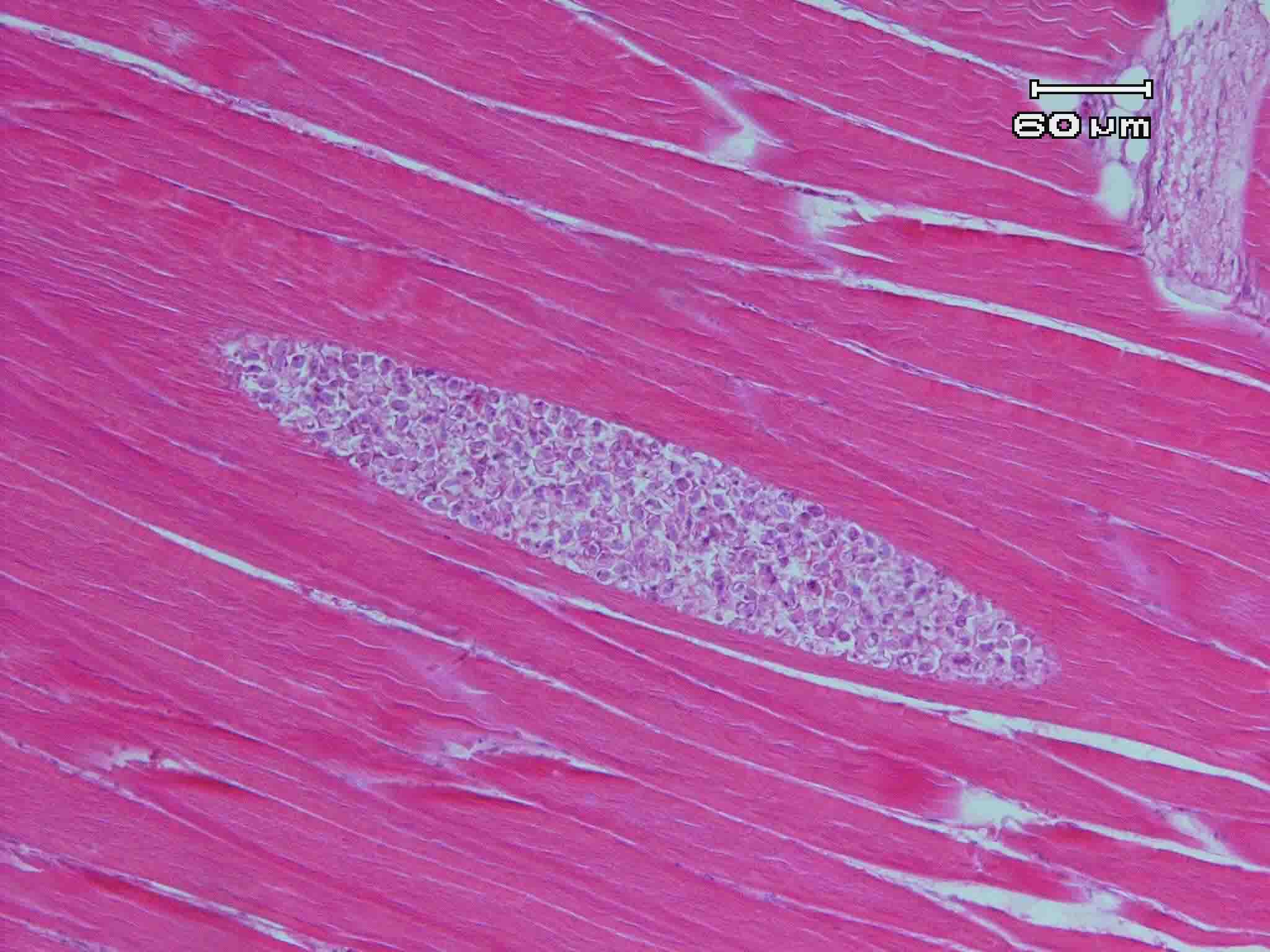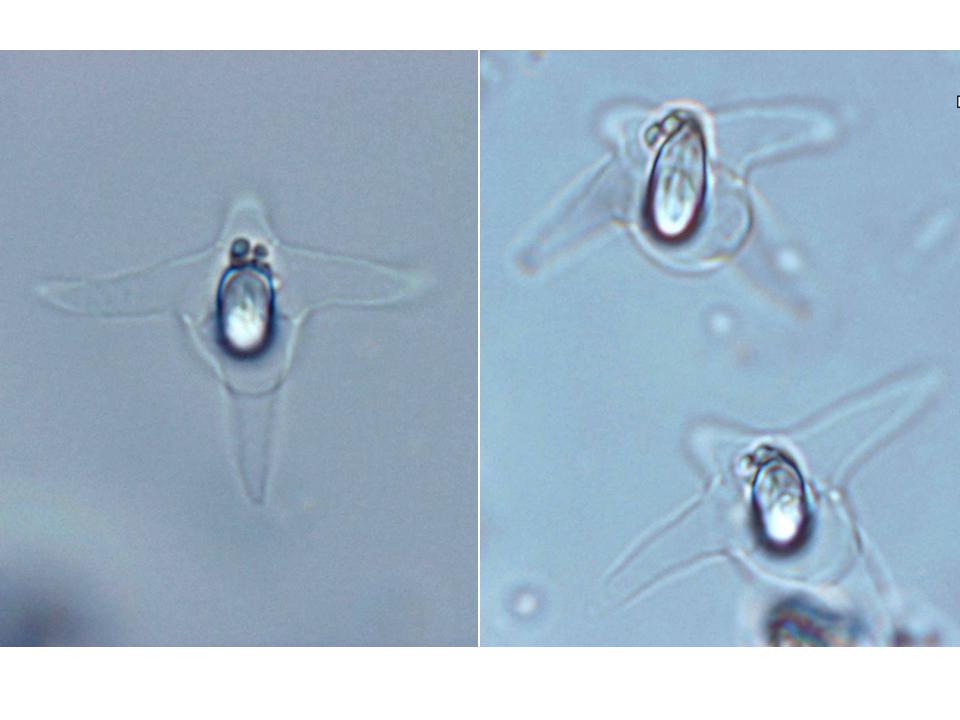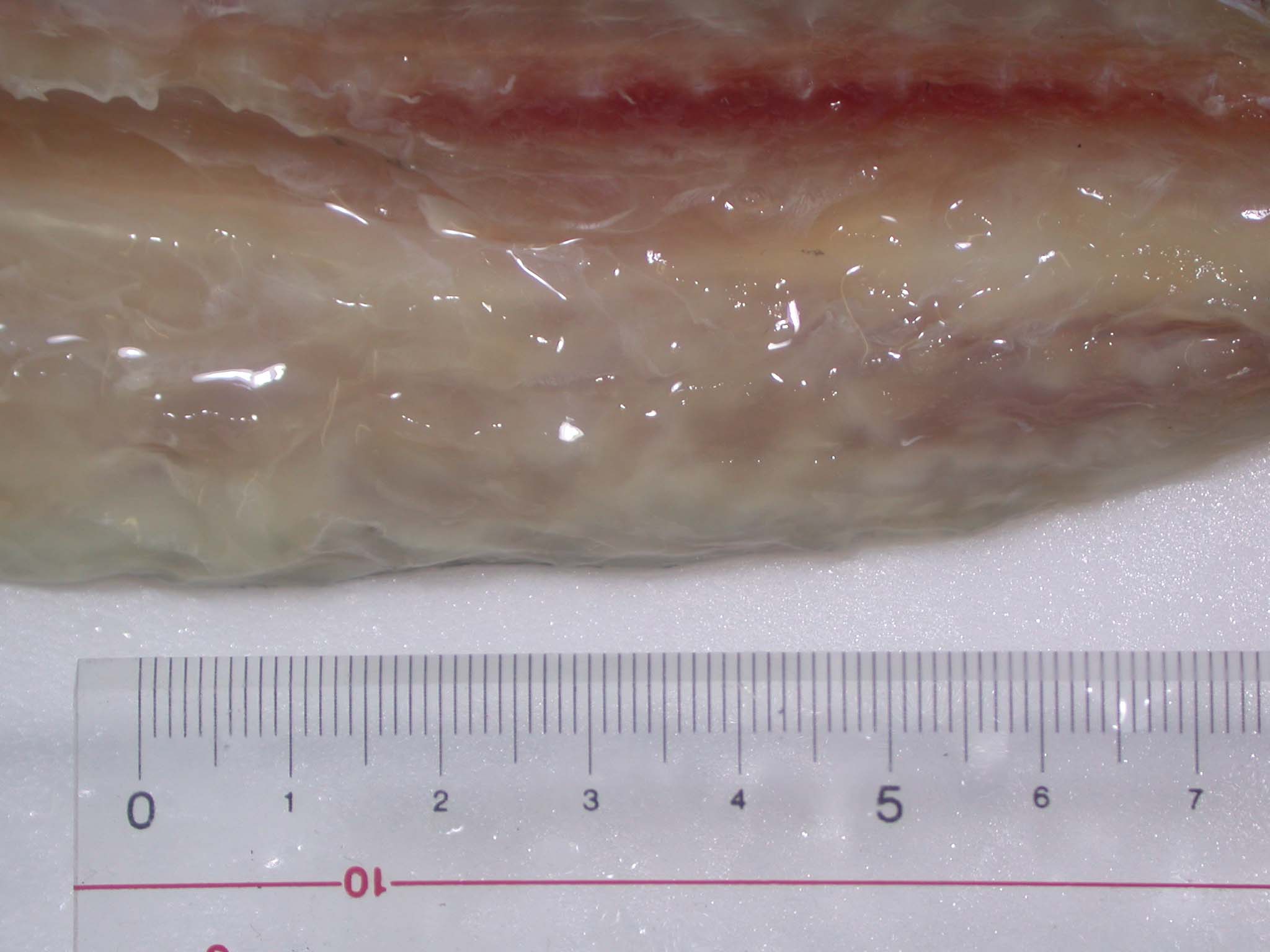
| Parasite | Kudoa megacapsula |
|---|---|
| Taxonomy | Myxozoa, Myxosporea, Multivalvulida |
| Hosts | Red barracuda (Sphyraena pinguis), Yellowtail (Seriola quinqueradiata), Common dolphinfish (Coryphaena hippurus) |
| Disease name | Muscular kudoosis or post-mortem myoliquefaction |
| Infection site | Trunk muscle |
| Clinical signs |
Myoliquefaction occurs in red barracuda and common dolphinfish (Fig. 1: Red barracuda). On the other hand, a number of filamentous or sesamoid black cysts ( length 2-3 mm) are formed in yellowtail (Fig. 2). Infection is not fatal to host fish. |
| Parasitology | The parasite develops inside the muscle fiber and forms lots of spores (Fig. 3: Yellowtail). The spore (thickness 40.0 (30.3-44.7)~30.9 (25.6-34.9) Ê; length 13.4 (9.3-15.4) Êm) is cruciform and has 4 distinct projections and 4 polar capsules, one (length 12.7 (11.7-14.2) Ê) extremely larger than the other three (2.8 (1.5-4.4) Ê) (Fig. 4). The life cycle is unknown. |
| Pathology | After the parasite developes and sporulates inside the myocytes, host reaction differs among the fish species. After the host death, the neighboring tissues are liquefied by the proteolytic enzymes derived from parasite following to the disintegration of the myofibrils in red barracuda and common dolphinfish. On the other hand, in yellowtail, the parasite is encapsulated by the connective tissue of the host, and granulomatous inflammation and deposition of melanin pigments are found. |
| Health hazard | Since this parasite is not infectious to human, it is harmless in food hygiene.There is no report that the liquefied fish meat is toxic. |
| Diagnosis | Check the spores by wet-mount of squashed muscle tissue. A morphological identification is not difficult because this parasite has a extremely large polar capsule and the winglike projections (Yokoyama & Itoh, 2005; Yokoyama et al., 2006). When the myoliquefaction or the degeneration of the black cysts progress, the detection of the spores is sometimes difficult, but check the remnants of the spores (a large polar capsule). Sample should be smeared and stained by Giemsa or Diff-Quik. |
| Other information | This disease was first noticed when producing the dried red barracuda imported from China because of the myoliquefaction (Yokoyama & Itoh, 2005). In yellowtail, this disease was reported only in 1-year cultured fish whose the seedlings is imported from Korea (Yokoyama et al., 2006). Although these facts strongly suggest that K. megacapsula was introduced from China and Korea, it is unclear whether this parasite exists in the coastal water of Japan. There are no effective methods to prevent this disease. |
| References | Yokoyama, H. and N. Itoh (2005): Two multivalvulid myxozoans causing postmortem
myoliquefaction: Kudoa megacapsula n. sp. from red
barracuda (Sphyraena pinguis) and Kudoa thyrsites from splendid alfonso (Beryx splendens). J. Parasitol., 91,
1132-1137. Yokoyama, H., T. Yanagida and I. Takemaru (2006): The first record of Kudoa megacapsula (Myxozoa: Multivalvulida) from farmed yellowtail Seriola quinqueradiata originating from wild seedlings in South Korea. Fish Pathol., 41, 159-163. |

Fig. 4. Fresh spores of K. megacapsula

Fig. 2. Numerous black cysts found in the muscle of yellowtail.
Fig. 1. A fillet of red barracuda showing myoliquefaction.


Fig. 3. Plasmodium of K. megacapsula developing in the myocyte of yellowtail.